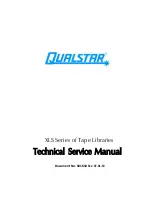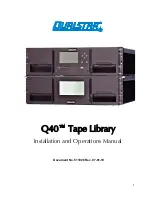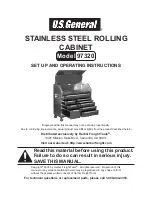
Installation Manual
Neocean IX1000 Network Storage System
Chapter 2 Installation Preparation
2-4
Long-lasting high humidity in the equipment room leads to poor insulation or even
electricity leakage of insulating materials. In a high-humidity environment, mechanical
performance deterioration, rust and corrosion of some metal parts are more likely to
occur.
If the relative humidity is too low, the captive screws may become loose due to a
contracted insulation washer. Meanwhile, static electricity is likely to be produced in a
dry environment, compromising the circuits of the device. Excessively high temperature
is more harmful to the device.
2.2.3 Cleanness Requirements
Dust is a hazard to the operating safety of the storage appliance. The indoor dust
accumulated on the chassis can cause electrostatic adsorption, which may result in
poor contact of connectors or metal contact points. This happens more frequently when
indoor relative humidity is low, which will not only shorten the service life of the switch,
but also cause equipment failures.
lists the dust concentration limit.
Table 2-3
Limitation on dust content in equipment room
Mechanical active material
Unit
Content
Dust particle
particles/m³
≤
3 x 10
4
(No visible dust on
desk in three days)
Note: Dust particle size
≥
5 µm
Besides the dust specifications, the equipment room should also meet the rigorous
requirements on the contents of salt, acid and sulfide in the air. These harmful gases
can accelerate metal corrosion and the aging of some parts. The equipment should be
protected against harmful gases, such as SO
2
, H
2
S, NO
2
, NH
3
, and Cl
2
. The specific
limitation values of these harmful gases are given in
Table 2-4
Harmful gas limits in an equipment room
Gas
Average (mg/m
3
)
Maximum (mg/m
3
)
SO
2
0.3 1.0
H
2
S 0.1
0.5
NO
2
0.04 0.15
NH
3
1.0 3
Cl
2
0.1 0.3
















































